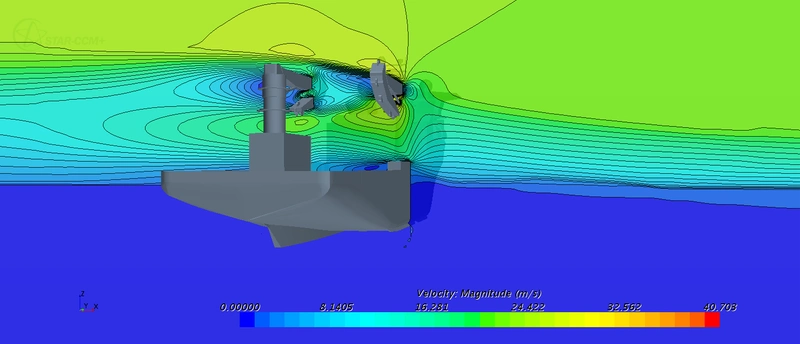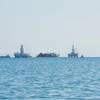New Options for Aerodynamic Analysis of Offshore Structures
Naval architecture and engineering firm Alan C. McClure Associates (ACMA) has recently completed a wind flow analysis on an offshore structure using its Computational Fluid Dynamics (CFD) software package.
Until recently, no alternatives existed to determine the effect of aerodynamics and its associated forces on offshore structures other than wind tunnel tests, ACMA said. And, while wind tunnels answer part of the question, they are limited in the level of detail they provide. ACMA has now provided that information to a client by virtue of a CFD analysis which uses physics formulas to capture the aerodynamics, including partial wind shadowing. ACMA said its application of this software approach also allows changes in the model to be made quickly and inexpensively, with results available almost immediately after the implementation of those changes. This cost-effective alternative to wind tunnels can provide fast and thorough results at a fraction of the cost previously associated with modifying models and administering additional testing.
Using its CFD program, ACMA can provide information on the wind flow around any offshore structure, including drag coefficients, wind forces, center of efforts, wind-patterns over helidecks and numerous other issues. Every aspect of the wind loadings can be broken down into a component for a single structural element and these component forces can be then be summed to determine the total force and the center of its application.
ACMA Naval Architect Nick Barczak said, “Thanks to ACMA techniques and software developments, details as small as isolated trusses in structures can be incorporated into a model with very little computing impact. This adds a greater degree of flexibility and accuracy in the models that are built and analyzed.”
ACMA is currently working to verify that the process and procedures used for their analysis are acceptable for class approval. Once these procedures are approved, they can be used in the future to provide more accurate analysis of offshore structures and vessels, while still maintaining an appropriate level of safety.
“It’s not enough to know how to run the CFD software,” added ACMA President Scott McClure, “you also need an understanding of the dynamics and math the software is using so you can ensure the delivery of an accurate, high-quality end product.” Scott also noted that in addition to using the CFD software for wind loading analysis, ACMA has been very successful utilizing it in the thermodynamic analysis of a cryogenic tank and how the thermo-loads will impact a ship’s structure.
According to ACMA Naval Architect Jeff Reifsnyder, “We modeled the ship structure, added insulation and its properties, cryogenic tank support and isolation materials, as well as ambient air and water temperatures. The software allowed us to put in temperature thresholds, and with this we were able to identify areas that are impacted and materials that need to be replaced.”
The flexibility of the software has also allowed ACMA to model bilge-keels to determine their effectiveness in roll damping, propeller flow and design, flow impact into underwater appendages in high flow areas and virtual tank testing for speed/power predictions. In every case, the results were found to have accurate correlations to what was experienced.
In the future, ACMA anticipates the demand for its advanced analysis capabilities will continue to grow. With its CFD software providing fast and accurate engineering analysis, changes can be made at a fraction of the cost required by a physical model and that’s an important factor, considering time is money.














